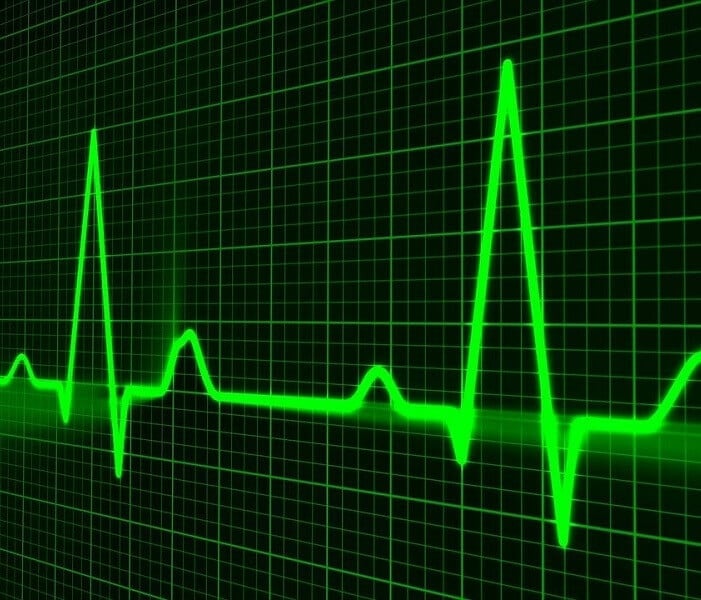6 mins read
Cholesterol Statistics – High Cholesterol in The UK in 2019

- Our Key Findings
- What is Cholesterol?
- How Many People In The UK Have Raised Cholesterol Levels?
- Cholesterol Levels in Women By Age
In this article we take a look at the statistics around raised cholesterol levels in the UK population and the cost to the NHS. Plus, how you can manage high cholesterol levels.
Our Key Findings
We used a combination of our own internal data, NHS open prescription data and Google Search data for this piece of research. The key findings in summary:
- 39.65% of people in the UK have high or borderline high levels of LDL cholesterol (bad cholesterol). That’s according to our data from those who have carried our blood test with Forth.
- Cholesterol levels increase with age and for women going through the menopause.
- The cost to the NHS for lipid-regulating medications in May 2019 was £16.7m.
- In May 2019, there were more than 6.5 million prescriptions issued for lipid regulating drugs.
View our Wellness Tests and start your journey to better health today
What is Cholesterol?
Cholesterol is a type of fat, also known as a lipid, found in the body. Despite its bad press, the body needs cholesterol for several vital functions. It is only when cholesterol is found in excess in the body that it can begin to cause health problems.
Cholesterol is required for:
- Cell membrane structure. Cholesterol is an important structural component within cells.
- The synthesis of steroid hormones and vitamin D.
- The production of bile acids to aid both digestion and the absorption of fats.
Cholesterol is insoluble in water and so must be transported inside special proteins called lipoproteins. There are five types of lipoprotein which are responsible for transporting cholesterol around the body, each of which is classified by their density. There are two major types, high-density lipoprotein (HDL) and low-density lipoprotein (LDL). These are known as good and bad cholesterol, respectively.
HDL is considered good because it removes excess cholesterol from the tissues and blood and transports it to the liver where it is removed from the body. The removal of cholesterol from circulation helps to prevent the build-up of excess cholesterol on the arterial walls and thus, prevents the narrowing of the arteries, a condition called atherosclerosis.
LDL, on the other hand, deposits excess cholesterol on the walls of the arteries, increasing the risk of cardiovascular disease.
The issue with high cholesterol is it doesn’t usually present with any obvious symptoms. Unless high cholesterol is managed, it can lead to devastating events such as heart attacks and strokes which in the worst cases may be fatal.
How Many People In The UK Have Raised Cholesterol Levels?
According to data collected by Forth, 39.65% of all subjects had high or borderline high levels of LDL cholesterol. These statistics can be compared to Public Health England’s who state 60% of adults in England have high cholesterol. The link between high levels of LDL cholesterol and the incidence of cardiovascular disease is well established.
As our age increases, there is an increased risk of high cholesterol levels. As these levels increases, the risk of developing cardiovascular and atherosclerotic disease goes up. Both males and females may experience high cholesterol levels as they age.
Cholesterol Levels in Men By AGe
| Male Results
By Age | % of high or borderline high
LDL cholesterol | % high or borderline high
Total Cholesterol |
|---|---|---|
| 20-29 | 25.51% | 20.75% |
| 30-39 | 42.91% | 45.78% |
| 40-49 | 51.16% | 60.27% |
| 50-59 | 52.73% | 65.79% |
| 60-69 | 49.15% | 55.00% |
Source: Forth
Cholesterol Levels in Women By Age
| Female Results
By Age | % of high or borderline high
LDL cholesterol | % high or borderline high
Total Cholesterol |
|---|---|---|
| 20-29 | 21.28% | 22.22% |
| 30-39 | 24.90% | 38.36% |
| 40-49 | 35.27% | 53.52% |
| 50-59 | 51.72% | 75.69% |
| 60-69 | 70.45% | 89.13% |
Source: Forth
How Much Does Cholesterol Cost the NHS?
In 2016, lipid-lowering medicines accounted for 14% of the most commonly prescribed medicines. There were 6.5 million prescriptions for lipid regulating drugs in May 2019 compared to 5.8 million in February 2019.
The cost to the NHS for lipid-regulating medications in May 2019 was £16,749,328.44.
Statins are commonly prescribed to help lower cholesterol levels. They work by lowering the amount of LDL cholesterol produced by the liver and help to remove cholesterol from the blood to make bile, resulting in a reduction of blood cholesterol levels.
The Menopause And Cholesterol
Because ageing causes changes to the concentration of fats within our bodies, the menopause is a significant contributor to this in females. The menopause is a natural part of ageing in the female life cycle which induces many physical, physiological and emotional changes. Research, including our own shows that the menopause increases both total and LDL cholesterol.
Pre-menopause
- 29.9% with high or borderline high LDL levels
- 44.11% with high or borderline high total cholesterol levels
Post-menopause
- 58.28% with high or borderline high LDL levels
- 82.12% with high or borderline high total cholesterol levels
The menopause affects all females and occurs because of the ovaries ceasing to produce the hormone, oestrogen. The decline in oestrogen is a result of the cessation of egg development and ovulation which are essential to produce both oestrogen and progesterone. A deficiency in oestrogen can cause the onset of early and long-term health problems. Plus, the menopause is a significant risk factor for raised cholesterol levels. It is, therefore, associated with a progressive increase in total cholesterol, particularly LDL cholesterol. Therefore, there may be a marked difference between the lipid profiles of pre and postmenopausal women.
How to Manage High Cholesterol
Diet
Reducing Saturated Fats
Diet is an important part of maintaining a healthy lifestyle, particularly the type of fat you consume. Our body uses saturated fat to make cholesterol. Therefore, if saturated fat intake is increased it can cause the body to produce excess cholesterol.
Saturated fat is often found in animal products and baked foods, some examples include:
- Butter, suet, lard
- Biscuits, pastries and chocolate
- Coconut and palm oils
- Bacon, sausages, fatty cuts of meat and cured meats
- Cheese, cream and full-fat milk
Increasing Unsaturated Fats
Eating higher levels of unsaturated fats are considered healthier because they can help to lower cholesterol levels. When following a healthy, balanced diet it is better to choose foods which have higher levels of unsaturated fat and less saturated fat.
There are two types of unsaturated fat, monounsaturated and polyunsaturated. Both types are present in high quantities in the Mediterranean diet which is advocated for its many health benefits including good heart health and a reduced risk of developing heart disease. Examples of monounsaturated fats are:
| Monounsaturated Fats | Polyunsaturated Fats |
|---|---|
| Olive Oil | Corn and sesame oil |
| Rapeseed Oil | Walnuts |
| Avocados | Flaxseeds |
| Nuts | Sesame & sunflower seeds |
| Olives | Oily fish |
Polyunsaturated fats are important because they help to lower levels of LDL cholesterol in the blood. Polyunsaturated fats also provide the body with essential fatty acids which the human body is unable to make, like omega-3 and omega-6. Omega-3 fatty acids have been shown to lower the risk of cardiovascular disease and guidelines state we should aim to eat at least two servings of oily fish per week as well as incorporating other food sources such as walnuts and flaxseeds.
Read more: 10 super foods that help lower cholesterol
Exercise
Exercise is another fundamental aspect of a healthy lifestyle. Physical activity has been shown to have a positive impact on reducing cholesterol levels. Regular exercise has been shown to increase the levels of HDL cholesterol while at the same time reducing or offsetting increases in LDL cholesterol and triglycerides. Aerobic exercise at high intensity is thought to be helpful in improving the lipid profile.
Summary
- Ageing is a risk factor for high cholesterol levels in both males and females.
- The menopause in females causes changes to lipid and cholesterol concentrations in females.
- The rise in LDL cholesterol is more rapid in males than in females.
- Our data shows male LDL cholesterol levels peak between the ages of 40 and 59 years.
- Our data also shows female cholesterol levels are highest between the ages of 60 and 69.
- Post-menopausal women are almost twice as likely as premenopausal women to have high LDL cholesterol levels.
The data collected represents individuals who are now aware they have high cholesterol levels and can address their lifestyle accordingly to reduce the associated risks. However, there is a high proportion of individuals who may not be aware they have high cholesterol, particularly as it doesn’t present with any obvious signs or symptoms. Therefore, it is essential to have a cholesterol check to ascertain your own levels.
- Health scores calculated
Close
Article references
-
Akyea, R, K., Kai, J and Qureshi, N et al. (2019). Sub-Optimal Cholesterol Response to Initiation of Statins and Future Risk of Cardiovascular Disease. Heart: 105, pp 975-981.
-
Currie, H and Williams, C. (2008). Menopause, Cholesterol and Cardiovascular Disease.
-
Kreisberg, R, A and Kasim, S. (1987). Cholesterol Metabolism and Aging. Am J Med: 82(1B), pp 54-60.
-
Kris-Etherton, P, M., Harris, W, S and Appel, L, J. (2002). Fish Consumption, Fish Oil, Omega-3 Fatty Acids, and Cardiovascular Disease. Circulation: 106, pp 2747-2757.
-
Mann, S., Beedie, C and Jimenez, A. (2014). Differential Effects of Aerobic Exercise, Resistance Training and Combined Exercise Modalities on Cholesterol and the Lipid Profile: Review, Synthesis and Recommendation. Sports Med: 44(2), pp 211-221.
-
Saha, K, R., Rahman, M, M and Paul, A, R et al. (2013). Changes in Lipid Profile of Postmenopausal Women. Mymensingh Med J: 22(4), pp 706-11.
This information has been medically reviewed by Dr Thom Phillips
Thom works in NHS general practice and has a decade of experience working in both male and female elite sport. He has a background in exercise physiology and has published research into fatigue biomarkers.

Dr Thom Phillips
Head of Clinical Services
Related articles
Like this article? Here are some more based on similar topics.





